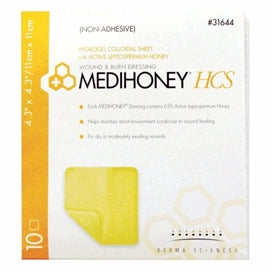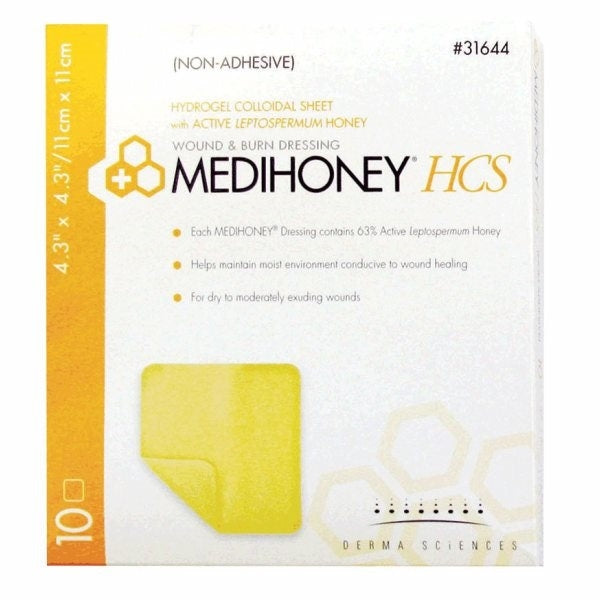Derma Sciences Medihoney HCS Hydrogel Dressing
Derma Sciences Medihoney HCS Hydrogel Colloidal Sheet Dressing
Our Price: $87.97
/
Description
Derma Sciences Medihoney HCS Hydrogel Colloidal Sheet Dressing
Derma Sciences Medihoney Hydrogel Colloidal Sheet Dressing provides a moisture balanced environment for wound healing. This Medihoney dressing is associated with lower pH levels within the wounds. Medihoney HCS comes in an adhesive and non-adhesive version.5 Reasons to Buy Medihoney HCS Dressing
- Promotes autolytic debridement
- Offers visibility to the wound
- Provides absorption and fluid handling capability
- Delivers soothing, cooling effect on application
- Latex-free
- A versatile and dynamic solution for post-surgical patient care
- Combines handling capability Super Absorbent Polymer (SAP) technology of healing properties of Leptospermum Honey
- Transparent dressingoffer visibility to wound
- Provide a moist environment conducive to wound healing
- Low pH helps to decrease protease activity
- Continues effectiveness even in the presence of wound fluid
- For light to moderate exuding wounds
- Contains 63% Antibacterial Leptospermum (Manuka) Honey in combination with a hydrogel colloidal gelling agent
- Allows for non-traumatic removal of dressing change
- Comes with SAP Technology that offers 2.5 times more absorption
- These Medihoney dressings are for partial thickness burns and wounds that are lightly exuding
- It helps in autolytic debridement and removes the factor that delays wound healing
- Non-Sterile
- Diabetic foot ulcers
- Leg ulcers (venous stasis ulcers, arterial ulcers and leg ulcers of mixed etiology)
- Pressure ulcers or sores (partial and full thickness)
- 1st and 2nd-degree partial thickness burns
- Donor sites, and traumatic and surgical wound
Technical Specs
Specifications








